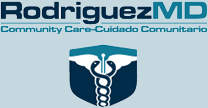September is Thyroid Cancer Awareness Month
Thyroid cancer is a very treatable disease. Most types of thyroid cancer can be cured, if the cancer has not spread to other parts of the body. The disease is three times more common in women, and most people have no family history.
 The thyroid gland is a butterfly shaped gland located in the front of the neck below the Adam’s apple. There is a lobe on each side joined by a narrow section in the middle. The thyroid gland controls our body’s metabolism through the release of two hormones- T3 and T4. Our metabolism is the process by which the foods we eat are broken down and converted to energy that the body needs. A properly functioning thyroid is essential for our overall health and wellbeing.
The thyroid gland is a butterfly shaped gland located in the front of the neck below the Adam’s apple. There is a lobe on each side joined by a narrow section in the middle. The thyroid gland controls our body’s metabolism through the release of two hormones- T3 and T4. Our metabolism is the process by which the foods we eat are broken down and converted to energy that the body needs. A properly functioning thyroid is essential for our overall health and wellbeing.
Doctors often detect thyroid problems during routine physicals. They may feel a lump or swelling in the neck. A patient may notice some symptoms on her own including hoarseness or voice changes that do not go away, pain in the front of the neck, trouble swallowing, or a constant cough. Any of these symptoms should be reported to your physician. A lump or nodule on the thyroid indicates a need for further testing. This may include a thyroid ultrasound or a needle biopsy.
Most thyroid nodules are benign. It is common to develop nodules after age 60. Nodules may be solid or fluid filled. A non-cancerous nodule may not require any treatment is it isn’t causing a problem. The doctor may just decide to monitor it. Fluid filled nodules can be drained. If it is determined that a nodule is causing the thyroid to overproduce hormones, treatment may include surgery, radioactive iodine, or synthetic thyroid hormone.
It is estimated that only 7-15% of thyroid nodules are cancerous. Most cancer treatment includes surgical removal of part or all of the thyroid. Sometimes surrounding lymph nodes are also removed. Surgery may be followed by treatment with radioactive iodine. The patient is given oral supplements to replace the thyroid hormones. The most common type of thyroid cancer has a 10-year survival rate between 80-90%.




